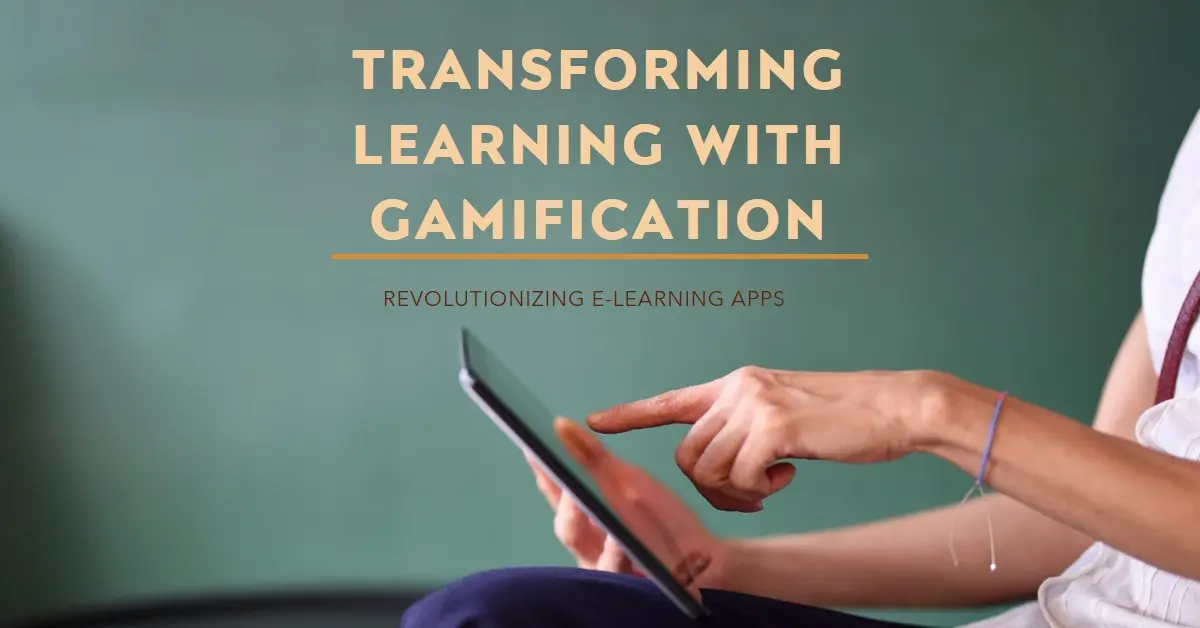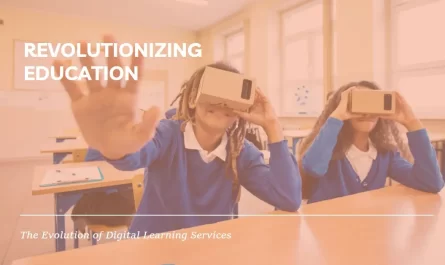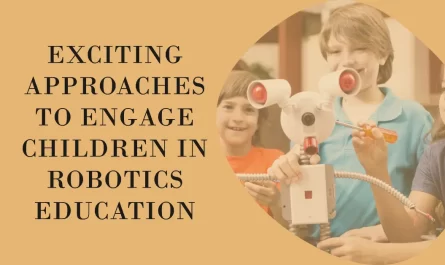Are you ready to embark on a journey where learning meets play, and education becomes a captivating adventure? In today’s digital age, the landscape of learning is undergoing a profound transformation, thanks to the innovative integration of gamification in e-learning apps.
This dynamic fusion of game elements and educational content is revolutionizing traditional approaches to learning, ushering in a new era of engagement, motivation, and effectiveness.
Imagine a world where mastering complex concepts feels more like leveling up in a video game than sitting through a lecture. Gamification in e-learning apps, developed by a leading e-learning app development company, makes this vision a reality by infusing learning experiences with elements such as points, badges, leaderboards, and challenges, transforming mundane tasks into immersive quests for knowledge and mastery.
But why is gamification in e-learning apps such a game-changer? Join us as we explore the significance of this transformative trend and uncover the myriad ways in which it is reshaping the educational landscape.
From personalized learning paths to real-time feedback, gamified e-learning apps offer a dynamic and interactive platform that empowers learners to take control of their education and embark on a journey of discovery like never before.
Get ready to unlock the power of gamification and unleash your full learning potential. Welcome to a world where education is not just informative but also incredibly fun and engaging.
8 Ways Gamification Transforms E-Learning Experiences
1. Increased Engagement
Gamification makes learning more exciting by adding elements like points, badges, and leaderboards, just like in your favorite video game. When learners see their progress represented by these rewards, they get motivated to dive deeper into the content. It’s like a friendly competition where everyone wants to earn the most points or reach the highest level. These features grab learners’ attention and keep them actively involved, making the learning experience more enjoyable and effective.
So, instead of feeling bored or disconnected, learners feel like they’re part of an exciting adventure where they can track their achievements and strive to improve. Gamification turns learning into a fun challenge that keeps learners coming back for more, eager to conquer new tasks and earn rewards.
2. Enhanced Learning Experience
Gamified e-learning apps take learning to the next level by immersing learners in realistic scenarios and giving instant feedback. Imagine learning to solve a math problem through a game where you run a virtual store, managing inventory and profits. When you make a decision, you get immediate feedback on whether it was right or wrong, just like in real life.
This interactive approach makes learning more engaging and memorable because it feels like you’re actually applying your knowledge in a practical setting. Plus, the instant feedback helps you learn from your mistakes and improve faster. With gamified e-learning, you don’t just absorb information passively – you actively participate in your learning journey, making it more dynamic and effective.
3. Personalized Learning Paths
Gamification revolutionizes learning by customizing the learning journey for each individual. Picture this: you’re using a gamified e-learning app to learn a new language. Instead of following a one-size-fits-all curriculum, the app adapts to your progress and preferences. If you’re struggling with a certain topic, the app offers additional practice exercises or resources to help you master it.
On the other hand, if you’re excelling, the app challenges you with more advanced tasks to keep you engaged and motivated. This personalized approach is made possible through features like branching scenarios and adaptive assessments, which assess your performance in real-time and adjust the learning path accordingly. With gamification, learners receive tailored recommendations and challenges that cater to their unique needs and abilities, ensuring a more effective and engaging learning experience.
4. Motivation and Persistence
Gamification fuels learners’ motivation and persistence through friendly competition and achievable challenges. Imagine you’re using a language learning app where you earn points for completing lessons and mastering vocabulary. The desire to climb the leaderboard or earn badges drives you to stay committed to your learning journey. Even when faced with challenging tasks, the thrill of achieving high scores keeps you motivated to push through and strive for improvement.
In this gamified environment, every accomplishment, no matter how small, fuels your determination to excel. With gamification, learners are inspired to persist in their efforts, knowing that their hard work will be rewarded and recognized. This competitive spirit fosters a culture of continuous learning and improvement, ensuring that learners stay engaged and committed to their educational goals.
5. Social Interaction
Gamified e-learning platforms offer more than just individual learning experiences—they also create vibrant communities where learners can connect and collaborate with peers. Picture yourself on a language learning app where you’re not just studying solo, but also participating in group challenges and multiplayer games with other learners. These social elements bring a sense of camaraderie and teamwork to the learning process, making it more enjoyable and engaging.
Additionally, discussion forums allow learners to share insights, ask questions, and support each other’s progress. Whether it’s tackling a difficult problem together or celebrating a shared achievement, these interactions foster a sense of belonging and motivation. In gamified e-learning environments, learners don’t just learn from the content—they also learn from each other, building meaningful connections and friendships along the way.
6. Feedback and Progress Tracking
In gamified e-learning environments, learners receive immediate feedback on their progress, enhancing their motivation and engagement. Imagine using a language learning app where you receive instant notifications congratulating you on mastering new vocabulary or completing a challenging lesson. Progress bars visually represent your advancement, while achievement notifications celebrate your accomplishments.
This real-time feedback not only validates your efforts but also helps you track your growth over time. By knowing exactly where you stand and seeing your achievements recognized, you’re inspired to keep pushing forward. These game mechanics transform learning into a rewarding experience, where every step of progress is celebrated and every achievement fuels your motivation to strive for more.
With feedback and progress tracking seamlessly integrated into the learning process, gamified e-learning apps empower learners to stay focused, motivated, and on track towards their goals.
7. Skill Development
Gamification is a powerful tool for skill development, offering immersive learning experiences that go beyond rote memorization. Picture yourself using a gamified language learning app where you’re not just learning vocabulary, but also navigating through interactive scenarios that require problem-solving and critical thinking. For example, you might engage in simulated conversations with virtual characters, where you must make decisions based on contextual clues. These experiences not only deepen your understanding of the language but also hone your communication skills in real-world situations.
Similarly, in a gamified coding platform, you’re not simply learning syntax, but also tackling coding challenges that demand creativity and logical reasoning. By gamifying the learning process, learners are actively engaged in applying their knowledge to solve problems, make decisions, and overcome obstacles. This hands-on approach facilitates the acquisition of both theoretical knowledge and practical skills, ensuring a well-rounded learning experience.
8. Behavioral Change
Gamified e-learning apps have the power to drive meaningful behavioral change by leveraging the principles of motivation and reinforcement. Imagine using a fitness app that gamifies exercise by rewarding you with points and badges for completing workouts or hitting step goals. These rewards serve as positive reinforcement, encouraging you to maintain a consistent exercise routine and adopt healthier habits over time.
Similarly, in a financial literacy app, you might earn virtual rewards for saving money or making smart financial decisions. By gamifying financial management, users are incentivized to develop responsible spending habits and improve their financial well-being.
The key to promoting behavioral change lies in the effective use of rewards and reinforcements within the gamified learning environment. By offering tangible incentives for desired actions and habits, gamified e-learning apps motivate users to make positive changes in their behavior. Whether it’s adopting healthier lifestyle habits, improving study habits, or enhancing financial literacy, gamification provides a fun and engaging way to drive meaningful behavioral change.



